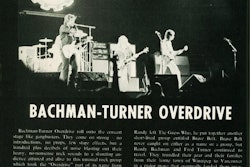Safety comes first … really?
I know a lot of companies and the DOT preach about safety, but I myself don’t see what they are doing about it.
There are ways to get the awareness out to the motoring public. The motoring public needs to be more aware of the dangers of big trucks on the road. We have safety awareness weeks for motorcycles during the year. How about safety awareness month about the trucking industry?
Give them a learning experience by using television, radio (XM, public broadcasting and Sirius) and billboards across America. Give them examples of accidents, the workings of a truck and how long it takes to react to situations, and what could happen when a blowout happens. Inform the motoring public about the dangers of tailgating.
Introduce trucking safety in driving school for teens. They are the new face of driving, and this would give them a better idea about hazards on the open road. Give them a grasp on the trucking industry and the dangers about the subjects listed above.
I have been driving for 20+ years in the trucking industry, and I have seen a lot of accidents that could have been prevented with a better safety program in place countrywide. It has to start somewhere, and why not here in the United States where the motoring public is getting larger every year?
Cynthia E. Kidder
Channelview, Texas
So-called sleep apnea
Over the past several months, I’ve been hearing and reading a lot about sleep apnea. Apnea shmapnea. It’s a non-issue for truck drivers. Us drivers know the reality out here. Not the self-serving, self-important bureaucrats. Here’s how it is.
Say you just backed into your parking spot for the night at some truckstop. Then, on your left backs in an owner-op with twin 8-inch chrome stacks droning away at low frequency. Along with that, his or her reefer is set on constant run to keep the box at -10 degrees. So it’s cycling away from fast to slow to fast about every 3 minutes. On your right comes a flatbed with a 5-year-old APU and a muffler that went bad two years ago. So it’s thumping away while blowing blue smoke on your tractor. The other side of that truck is a bobtail with a bad air pressure relief valve. You know the sound. Psssssssssh sst sst sst sst sst sst. Every 10 seconds or so. On top of that, you’re parked close to the shop. It was a hot day. Lots of blowouts. So you also get to listen to an air hammer pound away on lug nuts well into the night.
This is a typical night at a truckstop. Not the dreamland Shangri-La the TSA thinks it is. What do they think we’re running out here, a Boy Scout camp? Now, let’s look at your sleeping quarters. The usual is a 4-inch foam rubber pad stuffed in an area about the size of a coffin. You shove your way in, kiss the wall goodnight and try to catch a few Z’s.
So-called sleep apnea has been a human condition ever since we slithered out of the water, teetered up on two legs and discovered fire. It has been with us throughout the ages. And we humans seem to be living just fine. It strikes me as pathetic that there are those who are trying to blow up this issue into some kind of job-limiting disability.
What’s it going to be next? That we all have to be blond-haired and blue-eyed? Butt out, TSA. You are just showing us your ineptitude on trucking issues.
Randall J. Stevenson
New Port Richey, Fla.
An hours solution
As a driver for a large trucking firm, the FMCSA is restricting my freedom to work as hard as I want in the name of safety. Here is a suggestion on HOS.
FMCSA is dead-set on a 10-hour rule, so what if truckers gave them something even better? Suppose this was set up as a voluntary pilot program? FMCSA would agree to an indefinite freeze on the proposed rules now in the works.
Drivers who volunteer for this program would work on a 10-hour driving rule. They also would agree to stay off the road for one hour each of the morning and evening rush hours.
This would cost them about 10 hours a week, so the FMSCA would give it back to them as 80 hours over eight days instead of 70. Drivers would be allowed to take their 10-hour rest break as an eight, but companies must continue to schedule trips as if the drivers needed a 10-hour break, so they would not be forced to drive after the eight.
Drivers employing both rush hour opt-outs would be allowed to extend the 14-hour rule to half of the rush hour time they stayed off the road. Drivers would also be given up to an hour to get to a suitable safe parking place twice a week.
Because of the change in the 70-hour rule, the 34-hour reset rule is modified as well. The reset rule would be changed to 24 hours, and a driver must take off four days every calendar month, either all at once or separately.
Drivers would voluntarily install specially programmed EOBRs that also print out logs to help with audits, and in case of breakdown, there is a paper trail.
Drivers would send in $50 to the FMCSA for a special ID card. FMCSA would use part of the money for study of the safety of the program compared to other over-the-road trucks.
John Kinnecom
Arcadia, Fla.
How did the 9/11 attacks most change trucking?
“9/11 made me more aware of the people around me, my surroundings, and has made me more alert to things that might look suspicious. Also, the hazmat rule change was a big one.”
— Jamie R.
“More regulation: DOT can do anything if they want and penalize a driver for breathing wrong.”
— Riley M.
“The hazmat endorsement now requires a background check every time the license is renewed. Also, security issues everywhere.”
— Jacques C.
“Truthfully, what has changed? They readily admit they can’t inspect every container coming out of the ports. They can make many regulations, but with police forces being whittled down with budget cuts, how do the regulations get enforced?”
— Charlie N.
“Stupid hazmat finger-printing. I let [my hazmat endorsement] expire. It didn’t pay me any extra, so why hassle with it?”
— James M.
“Hazmat-required fingerprinting and the [Transportation Workers Identification Credential] are a pain to obtain and not worth my effort.”
— Bob M.
“I am more aware of what is going on around me and keep everything locked up a lot tighter.”
— Jennifer S.
“They’ve gone a little crazy with the regulations that we now have to drive with. I should say, ‘They’ve gone overboard!’”
— Bonnie C.
“I think the biggest change has been TSA cards, TWIC cards and all the other ID cards you now have to have. It should be one card for everyone. It’s a financial burden to some and a time-consuming process to others. One person, one card.”
— Seth W.
SOUND OFF
Submit a letter: Send letters to Truckers News, Attn: Randy Grider, 3200 Rice Mine Road NE, Tuscaloosa, Ala., 35406 or [email protected].
Tweet us: Hit up Truckers News’ Twitter page at twitter.com/truckersnews to provide quick and easy feedback in 140 characters or less.
Where were you on 9/11?
Sitting at a dock in Miami, Fla., and watching it on TV. Everyone was there, I’ll never forget it.
— Keith Liggons
Aragon, Texas
H&W Trucking
I was in Louisiana working on the Fifth Ward, an engineering project. I felt terrible, angry, upset, pissed off — you name it.
— Scott Humphrey
Dallas, Texas
TransAm Trucking
I was at the house watching TV on the news. It was a disaster. Crazy.
— LaMarcus Weir
Toomasuba, Miss.
owner-operator
I was asleep. A friend called, and I turned on the news. All I could think was, “Aw, hell no!”
— David Pavey
Lanchester, Ohio
Swift










